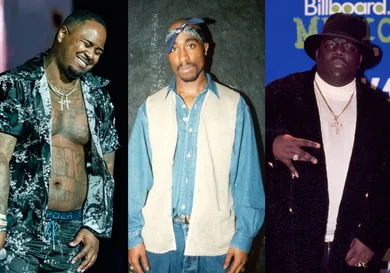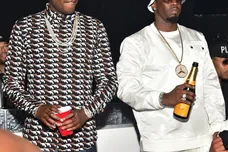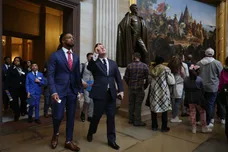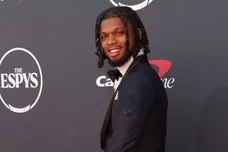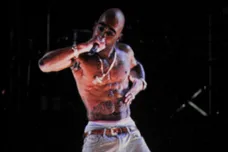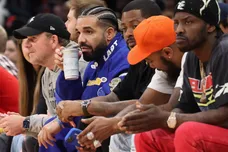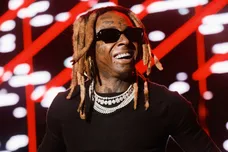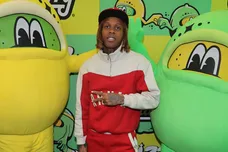It isn't a secret that tragedy riddles through the hip-hop community. Several well-known rappers have died in unsolved murders. Fans of the music genre not only wonder if this is a security issue, but these murders also serve as a reminder of how difficult it is to solve crimes in the music business. In this article, we delve into seven unsolved cases of murdered rappers.
Read More: 15 Deaths That Shook Up The Rap Game
Scott La Rock (1962 - 1987)
Born Scott Sterling in 1962, Scott La Rock was a trailblazer in the early history of hip-hop. In the mid-1980s, La Rock met KRS-One while working as a social worker at Franklin Armory Men's Shelter, where KRS-One was a resident. The two were then introduced to D-Nice, through a security guard that worked at the shelter. The three founded BDP, which marked the start of Scott La Rock's career as a DJ and producer.
Scott La Rock tragically lost his life in 1987, not long after the album's release, ending his career. His death was marked the first murder of a major hip-hop artist. On the night of August 27th, La Rock, DJ D-Nice, Scotty "Manager Moe" Morris, DJ McBooo, and BDP bodyguard Darrell were at the Highbridge Homes Projects, located in the South Bronx. They were there to deal with an issue that had arisen between D-Nice and a man whose ex-girlfriend became involved with D-Nice. After the dispute ended, shots rang out, hitting the red Jeep CJ-7 the BPD crew was riding in. La Rock was struck in the back of his head and was taken to Lincoln Hospital where he died from his injury.
The following year, two men named Cory Bayne and Kendall Newland were detained on suspicion of the crime, but they were ultimately acquitted since no willing witnesses were available. Shaking the hip-hop community, KRS-One focused on conscious-based rap, as he started and heavily promoted the Stop the Violence movement. In an effort to do so, KRS-One gathered hip-hop's biggest stars and released the 1989 single "Self Destruction" single. When "Self Destruction" premiered at No. 1 on Billboard's Hot Rap Singles, it marked a turning point for hip-hop's impact on culture in general and on young people in particular.
Tupac Shakur (1971-1996)
Tupac Shakur rose to fame in the hip-hop community to become one of the most influential musicians of our time. He began his career as a backup dancer for Digital Underground before becoming a rapper. His 1991 debut album 2Pacalypse Now openly addressed societal concerns through his provoking lyricism. Tupac's next albums, such as Me Against the World (1995) and All Eyez on Me (1996), saw tremendous commercial success and solidified his reputation as a generational talent. In addition to acting, Tupac appeared in movies including Juice (1992) and Poetic Justice (1993). His career faced different legal issues, as well as very public beefs.
The murder of Tupac Shakur is still a complex mystery that has captivated people around the globe for more than 25 years. Tupac was ambushed in a drive-by shooting in Las Vegas on September 7, 1996. According to sources, he had just left the MGM Grand with Marion "Suge" Knight after attending a Mike Tyson boxing match. They were shot at several times while stopped at a red light, and Tupac was hit four times. He was rushed to the hospital, where he battled for six days before dying on September 13, 1996. The alleged gunman has not been identified despite numerous investigations. Speculations of the cause of his murder include everything from beef within the East Coast rappers to government-related conspiracies. He was 25.
Notorious B.I.G. (1972 - 1997)
From the tough streets of Bed-Stuy, The Notorious B.I.G. has the streets on lock in the early 1990s with his debut album Ready to Die (1994). The larger-than-life rapper effortlessly displayed his skills as a storyteller and his iconic lyricism. His second, and last album, Life After Death (1997) solidified his legendary status years after his murder.
Following Tupac Shakur's murder, The Notorious B.I.G. was killed in a drive-by shooting while leaving a Soul Train after-party. The exact circumstances and motive behind his murder have remained elusive, contributing to the intrigue that surrounds the case.
Initial police statements suggested that Biggie's murder might have been a retaliatory act in the ongoing feud between East Coast and West Coast hip-hop artists. However, the investigation encountered significant obstacles, including a lack of cooperation from witnesses and a complex web of possible motives. The investigation is still ongoing despite theories of gang involvement and much more. The late rapper was 24.
Big L (1974 - 1999)
Next on our list is none other than Big L. The Harlem rapper quickly gained fame in the 1990s underground hip-hop scene for his superb lyrics and wordplay. His 1995 first album Lifestylez Ov Da Poor & Dangerous highlighted his style and clever storytelling. Big L worked with musicians like Jay-Z and Fat Joe and stood out for his engaging flow and unusual delivery. Despite receiving favorable reviews, he never achieved commercial success in his lifetime.
Sadly, his murder in 1999 ended his career before getting the chance to go mainstream. He was shot nine times on February 15, 1999. The shooting took place at 45 West 139th Street in Harlem, where he was shot in the face and chest. According to initial investigations, the shooting was in retaliation for something Big L's brother allegedly done. His murder remains unsolved.
5. Jam Master Jay (1965 - 2002)
As the DJ for the legendary group Run-DMC, Jam Master Jay made a significant contribution to hip-hop. His creative contributions to the group's distinctive sound pushed rap music to become more well-liked. By mixing rock and rap elements, Run-DMC's self-titled debut album from 1984 marked a turning point in hip-hop. Rap gained wider acceptance among mainstream audiences through to the group's smash "Walk This Way" with Aerosmith. In 2002, the legendary DJ was murdered. He was 37.
Newly submitted court records claim that the murder was motivated by a drug deal gone bad. According to the prosecution, the DJ was involved in the trafficking of cocaine between states. Jam Master Jay possessed 10 kilograms of the drug that Ronald Washington intended to sell in Maryland. According to a statement from the U.S. Attorney's Office, once Jam Master Jay informed Washington that he was being cut from the deal, Karl Jordan Jr. and Washington reportedly planned to have him killed. There have been several arrests made in connection to this homicide case. However, a trial date has been scheduled for November 2023 following the 2020 indictment of Washington and Jordan Jr.
Read More: Coolio's Death: What We Know
6. Mac Dre (1970 - 2004)
The Romping Room legend Mac Dre took the world by surprise when he came on the rap scene. A pioneering rapper and a pivotal figure in Bay Area culture, Andre Hicks was born in 1970. He began his career as a member of the Romper Room gang, an infamous group of bank robbers. At the age of 21, Hicks accepted an invitation from friends to travel to Fresno on March 26, 1992. Hicks chose to make the trip in order to go back and see a woman he met in the city after performing there two weeks earlier. Other Romper Room members attempted to rob another bank and were caught. Hicks said he didn't leave the hotel and was consequently clueless when questioned by the police. He was accused of conspiring to commit robbery and sentenced to five years.
Early in the 1990s, Mac Dre attracted recognition for his dynamic delivery and avant-garde fashion. He was a catalyst for the iconic "hyphy" movement. His 1999 album Rapper Gone Bad demonstrated his wit and originality. On October 31, 2004, Hicks and other members of Thizz Entertainment performed at a show in Kansas City, Missouri. In the early morning of November 1, 2004, an unknown shooter opened fire on the group's van as it was driving along U.S. Route 71. Hicks was shot in the neck and declared dead on the spot.
His unsolved murder in 2004 left a big hole in the Bay Area's hip-hop scene. And the retaliation murders that followed the rapper's death created more tension with those closest to Mac Dre. Despite his early passing, his influence lives on through the music he created.
Drakeo The Ruler (1993 - 2021)
Darrell Caldwell, aka Drakeo the Ruler, established himself as a significant figure in the West Coast hip-hop movement. Drakeo made a name for himself in the music industry with his distinctive voice, individual style, and reflective songs that frequently discuss his upbringing in the dangerous city. Emerging onto the scene in 2015, Drakeo effortlessly created/pushed the West Coast nervous music subgenre to new heights alongside his brother Ralfy the Plug, and his Stinc Team crew.
Drakeo faced difficulties along the way, though. He was detained in 2017 after being charged with murder and attempted murder with a gang enhancement. His lyrics were the focal point was charging the rapper. Drakeo's music has frequently dealt with themes of survival, street life, and personal development throughout his career.
His release from prison in 2021 was a pivotal moment in his career since it gave him the opportunity to fully re-engage with the music world. Fans who had been anticipating his homecoming greeted his reappearance with joy and expectation. After regaining his freedom, he continued to release new music and work with other artists, further establishing his place in the West Coast rap scene.
On December 18, 2021, at about 8:30 p.m., Caldwell was stabbed backstage at the Once Upon a Time in LA festival. His mother revealed that Caldwell, his younger brother, Ralfy the Plug, and their entourage were attacked by "around 40, 60 men" in masks around the time his rival YG arrived at the venue.
Many fans speculate that YG and Inglewood Bloods had connections to the murder, as he was beefing with them on and off of social media. Drakeo the Ruler's homicide case has yet to be solved.
